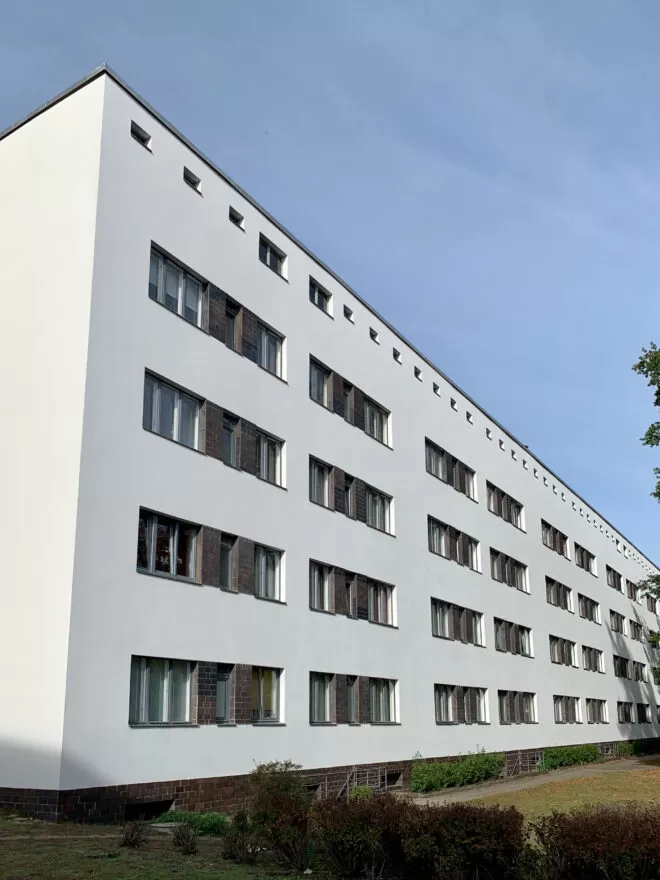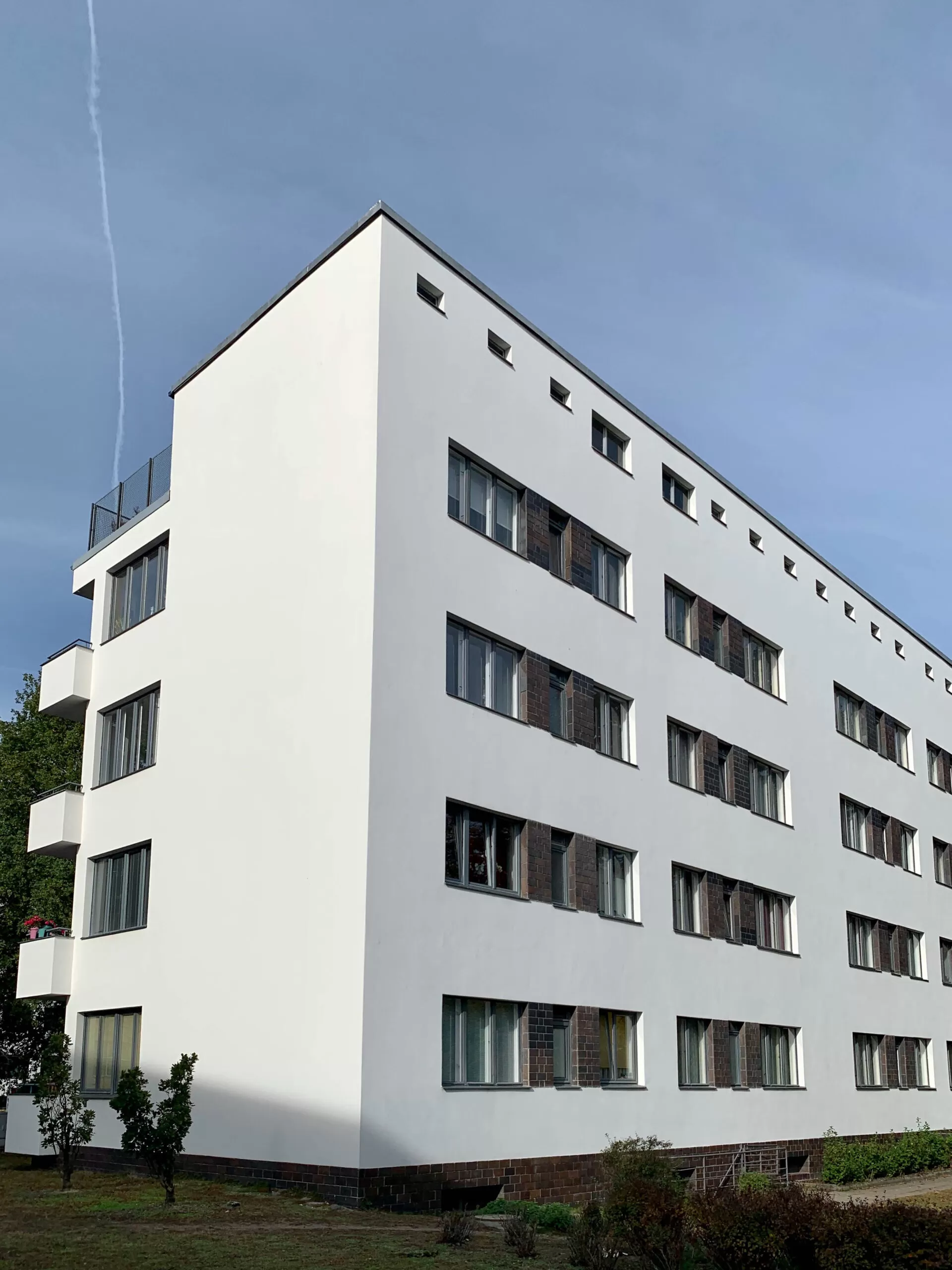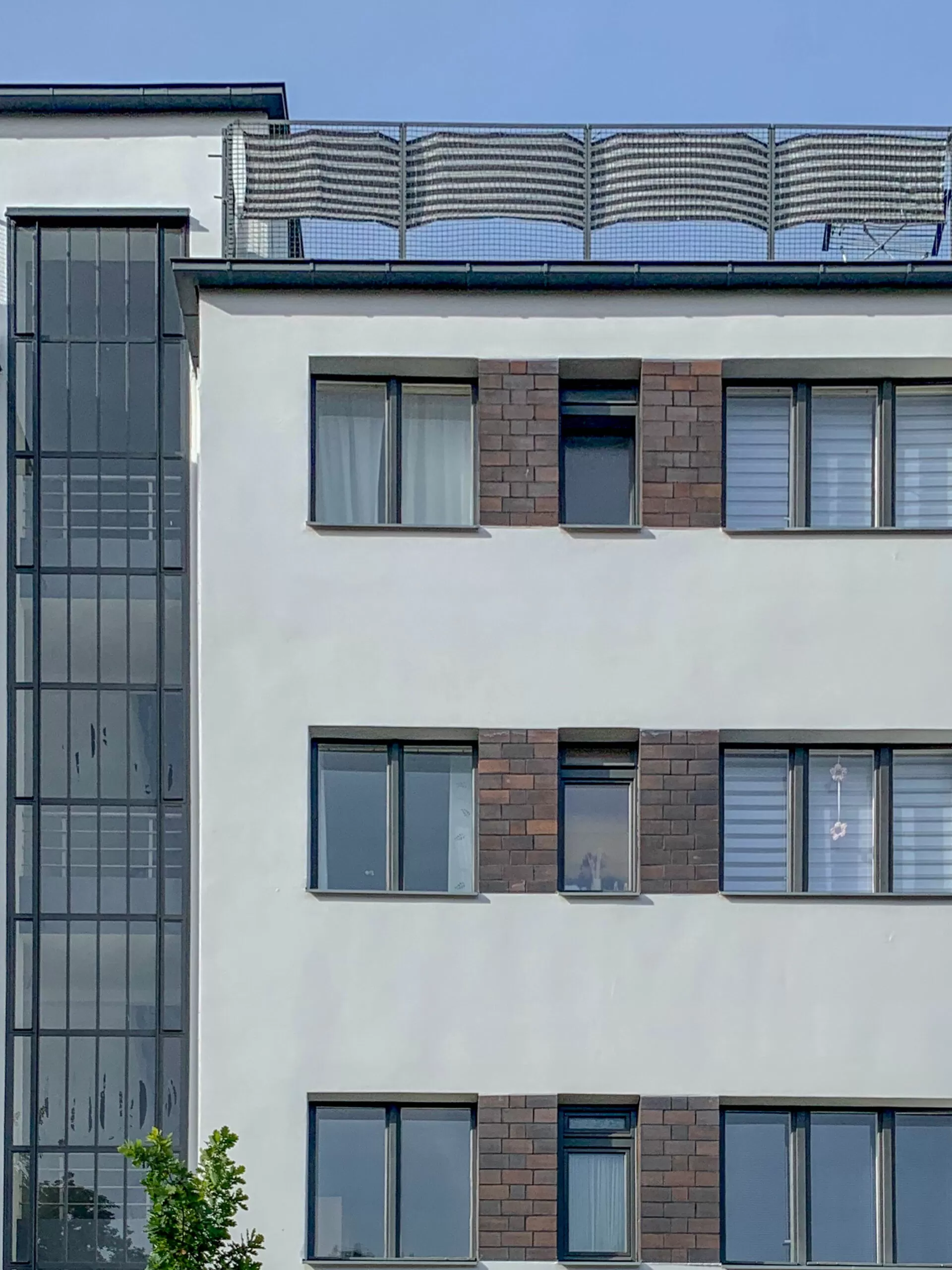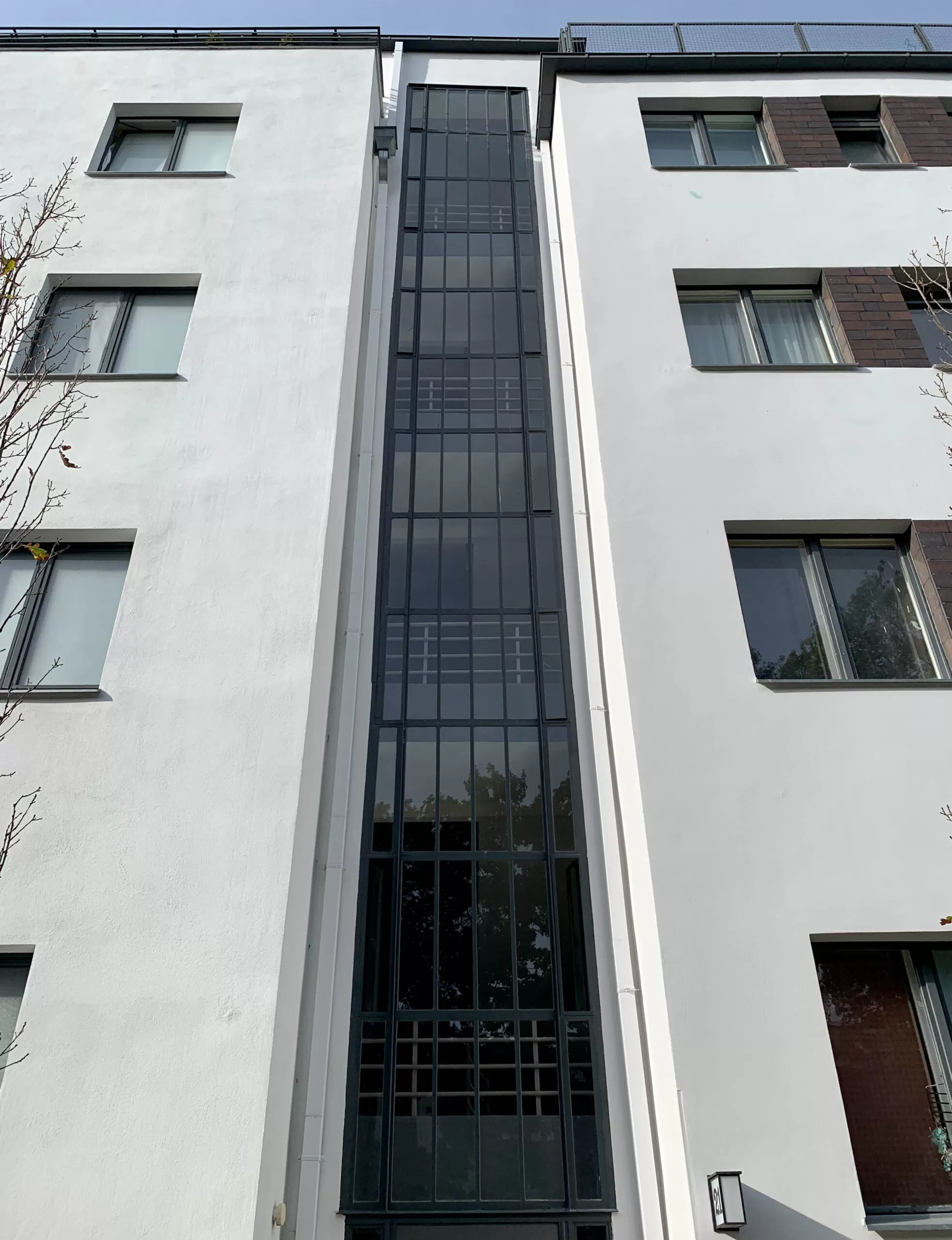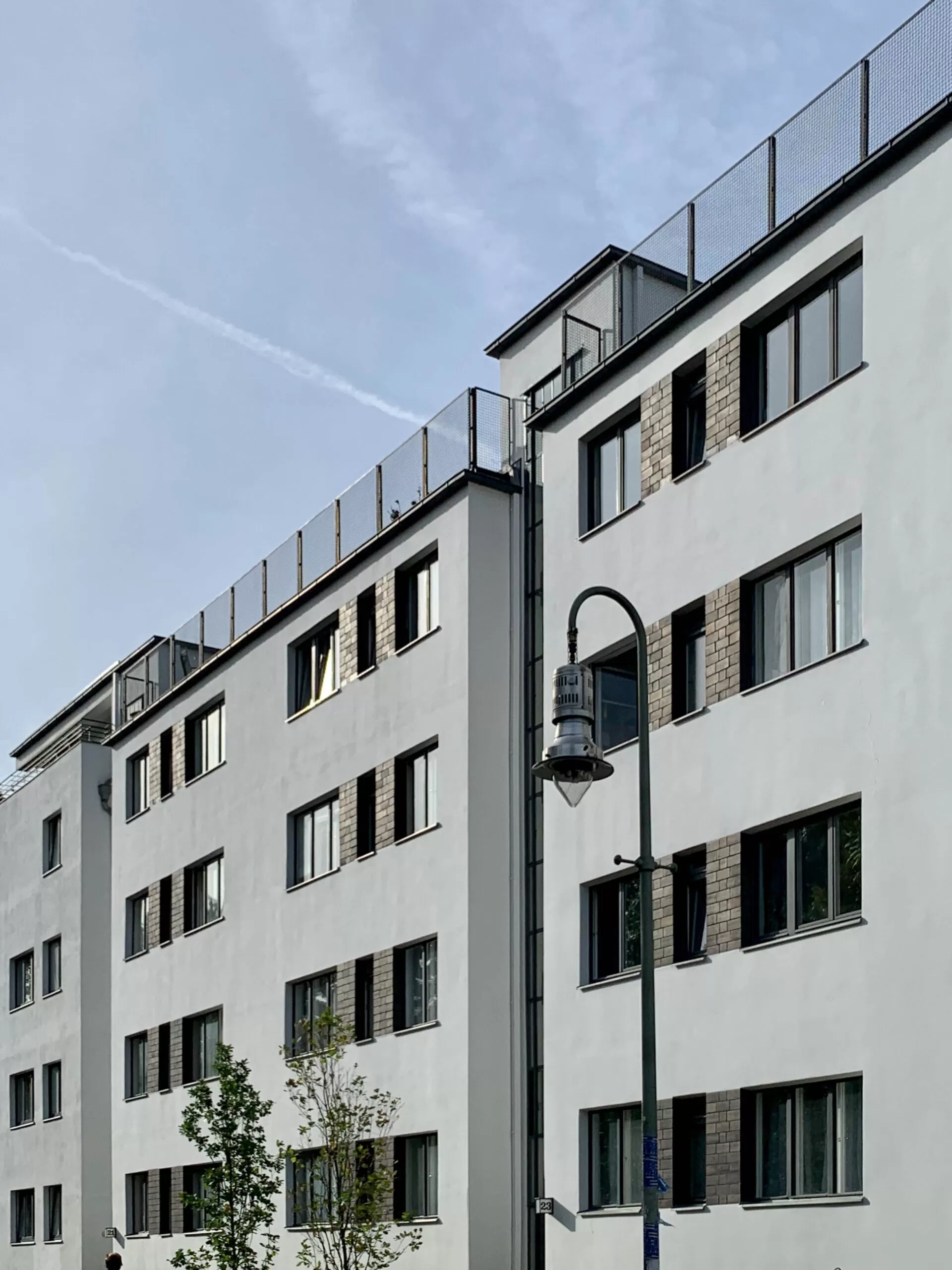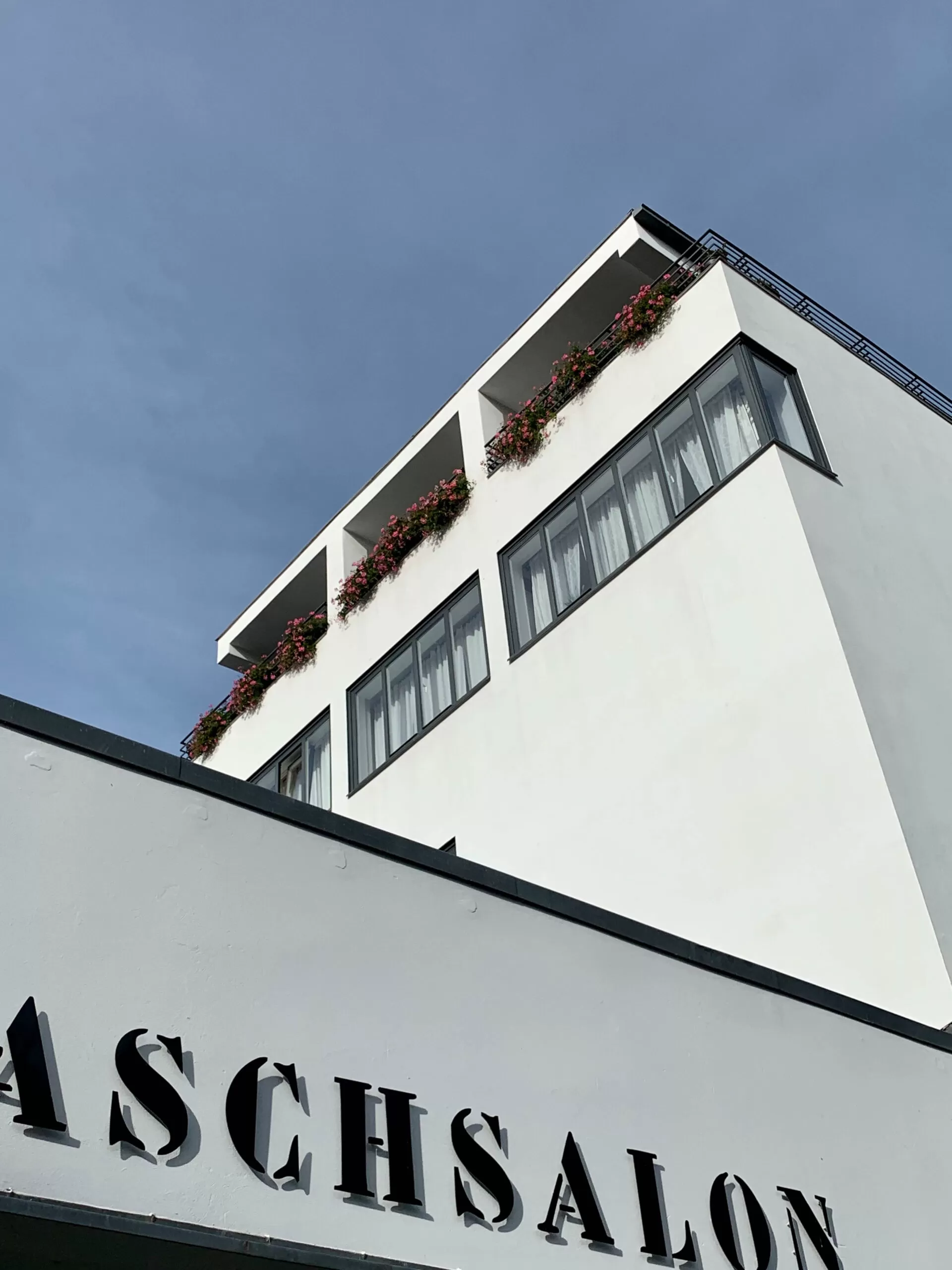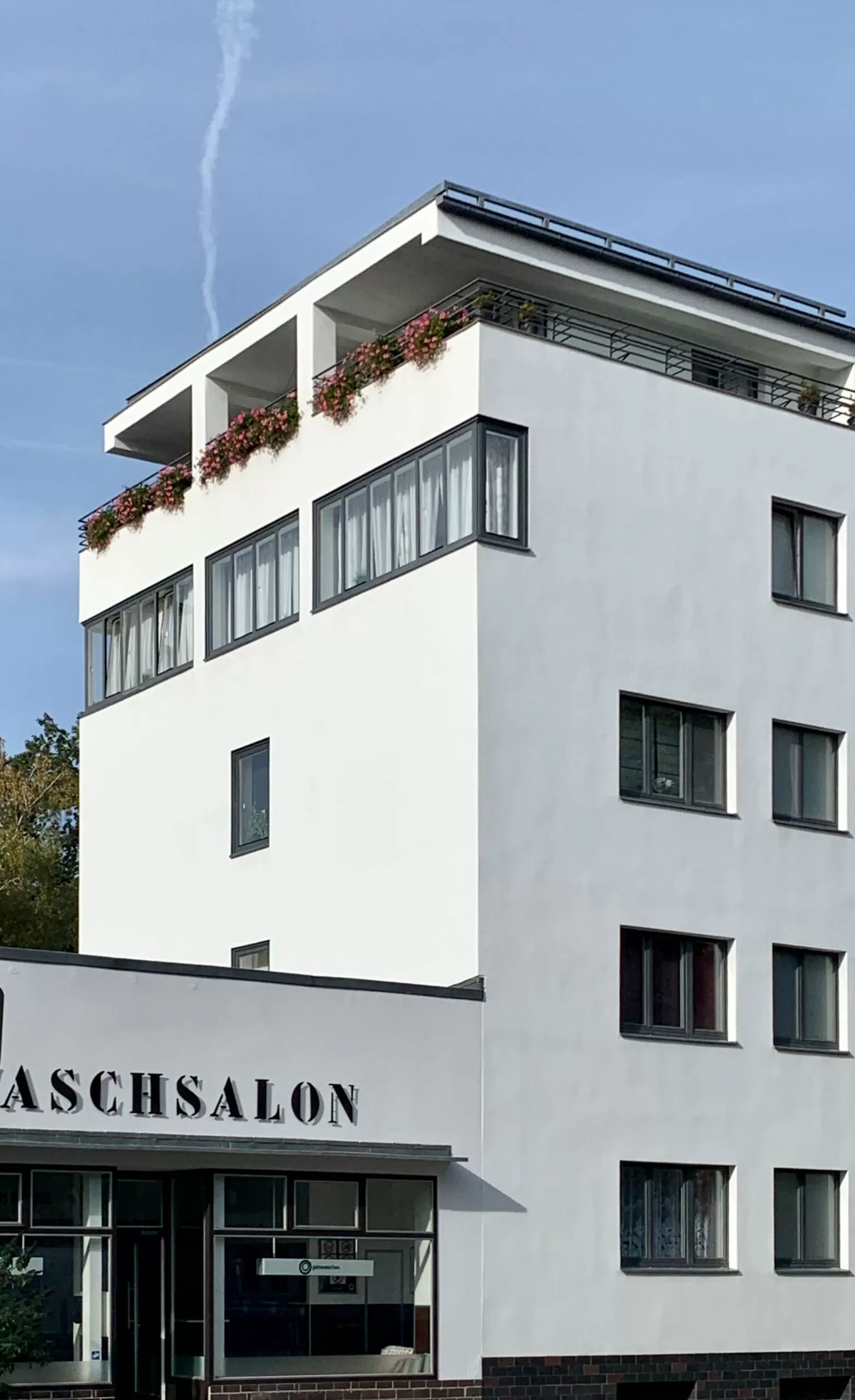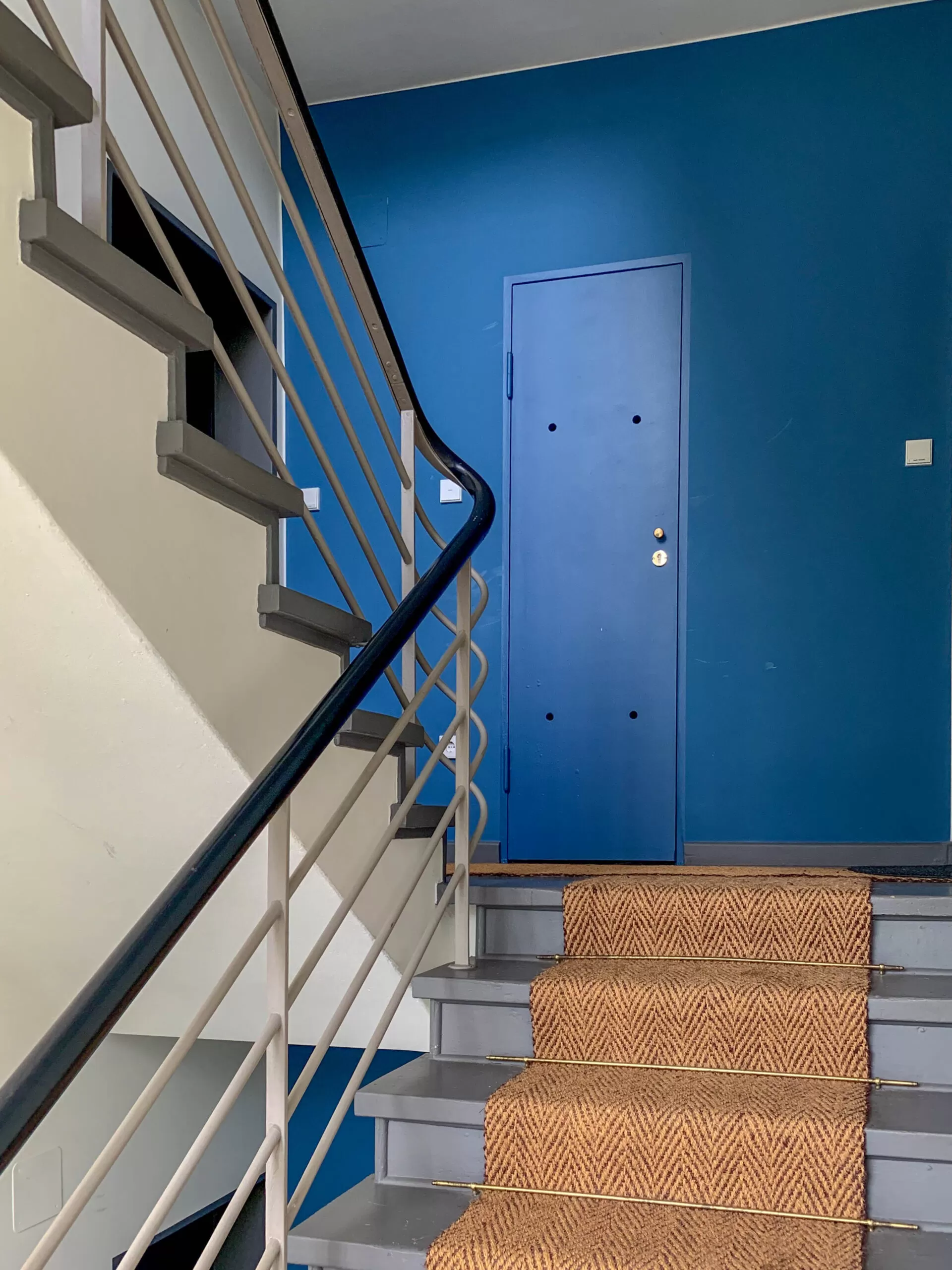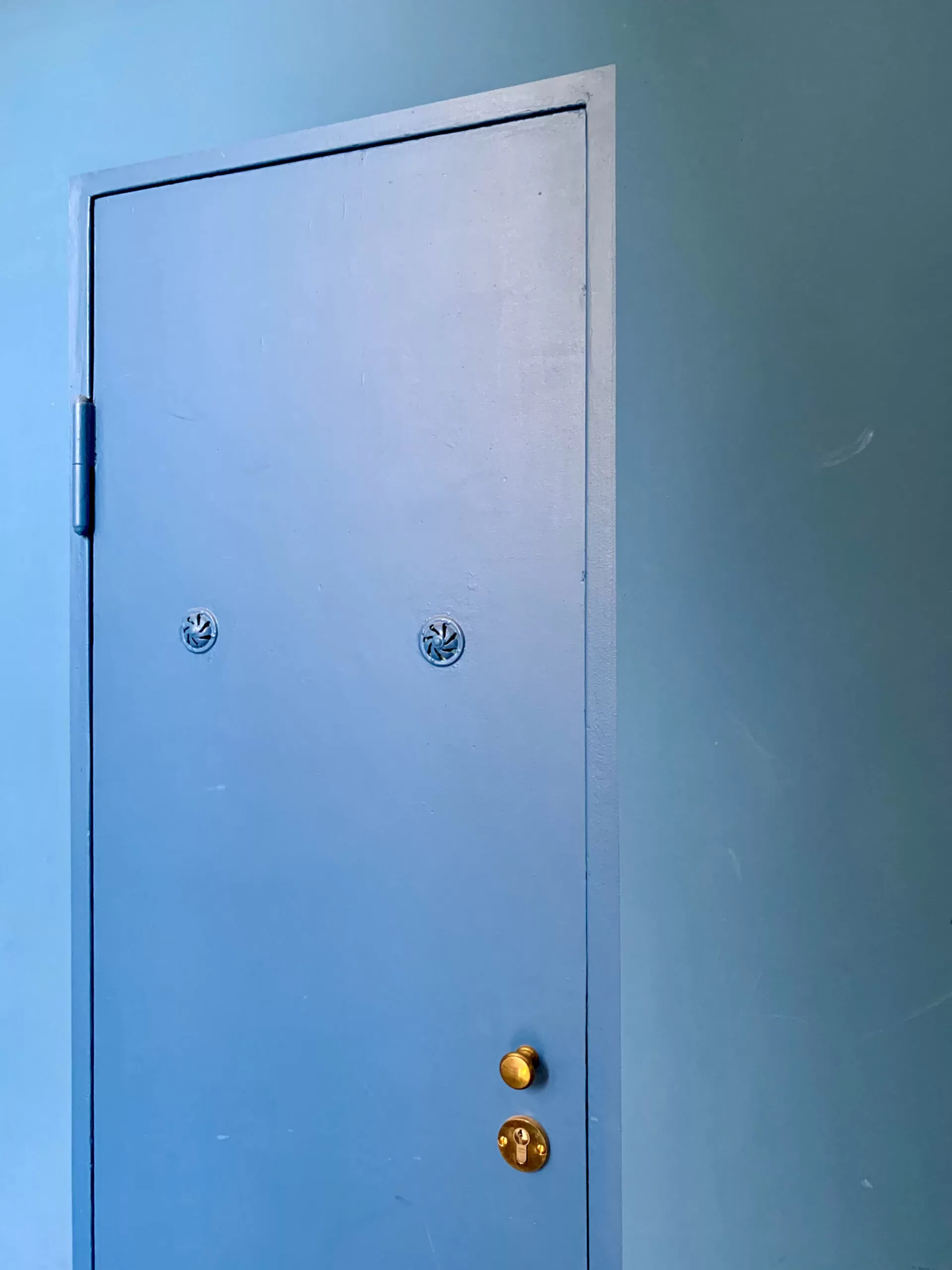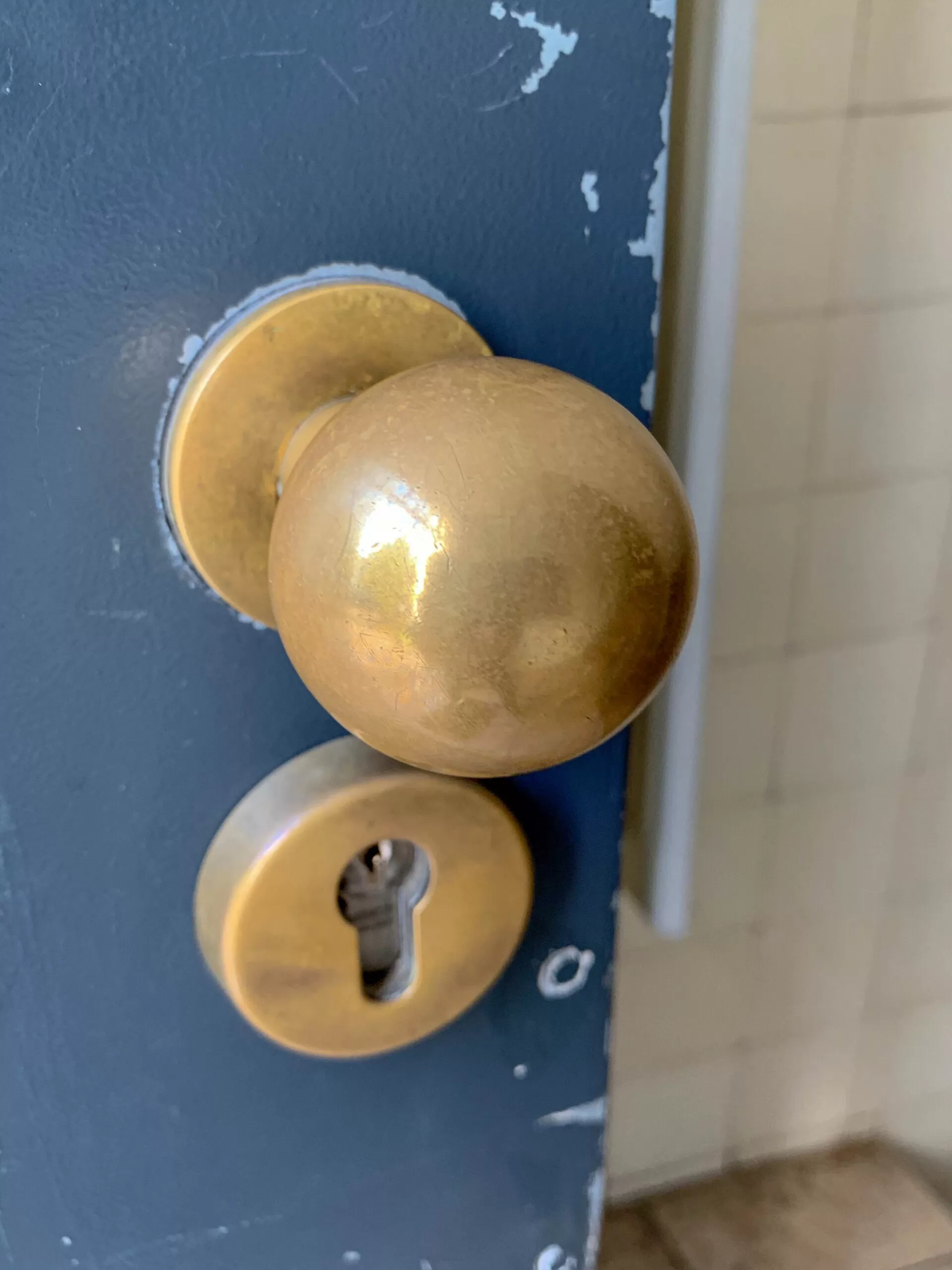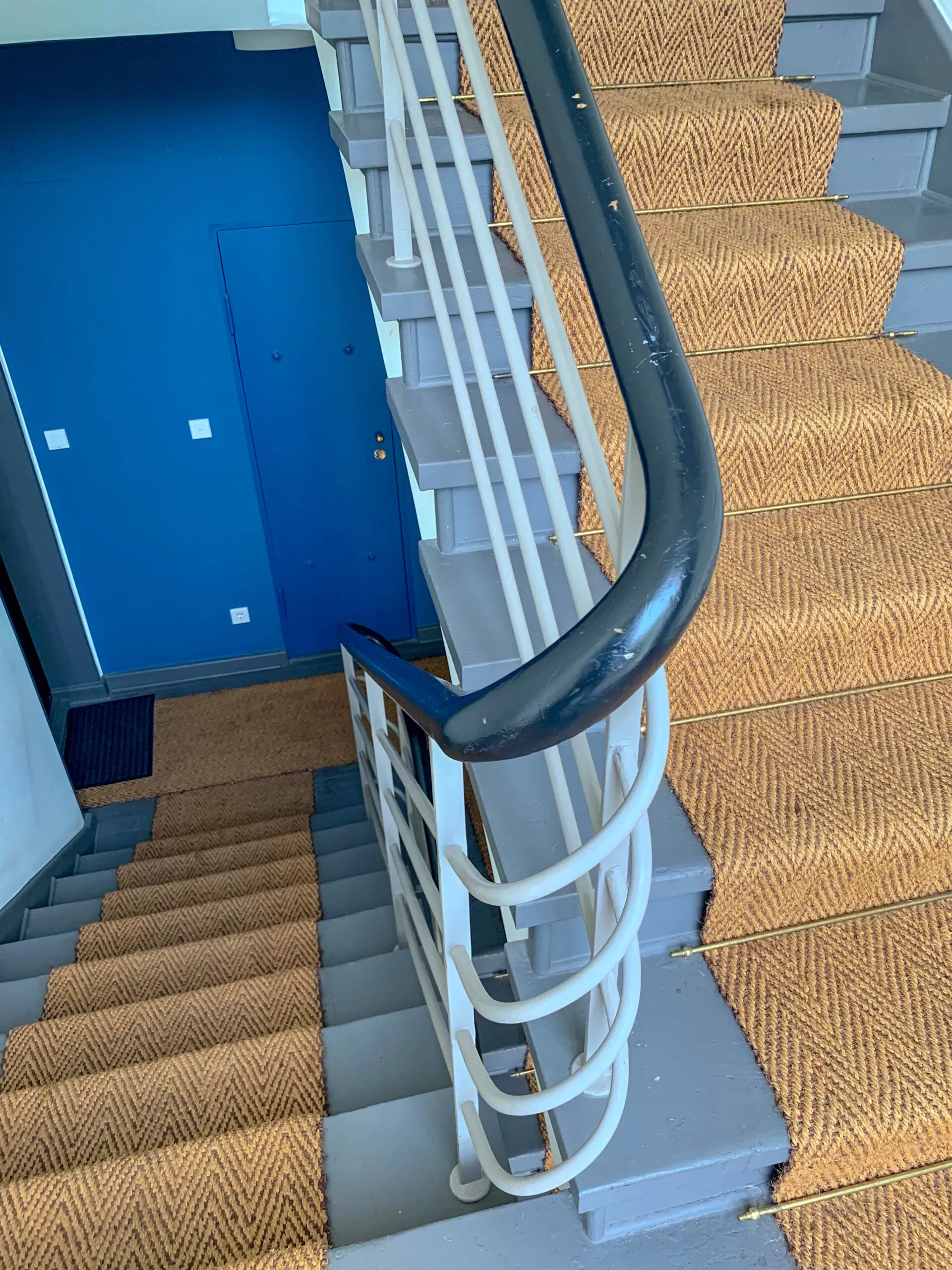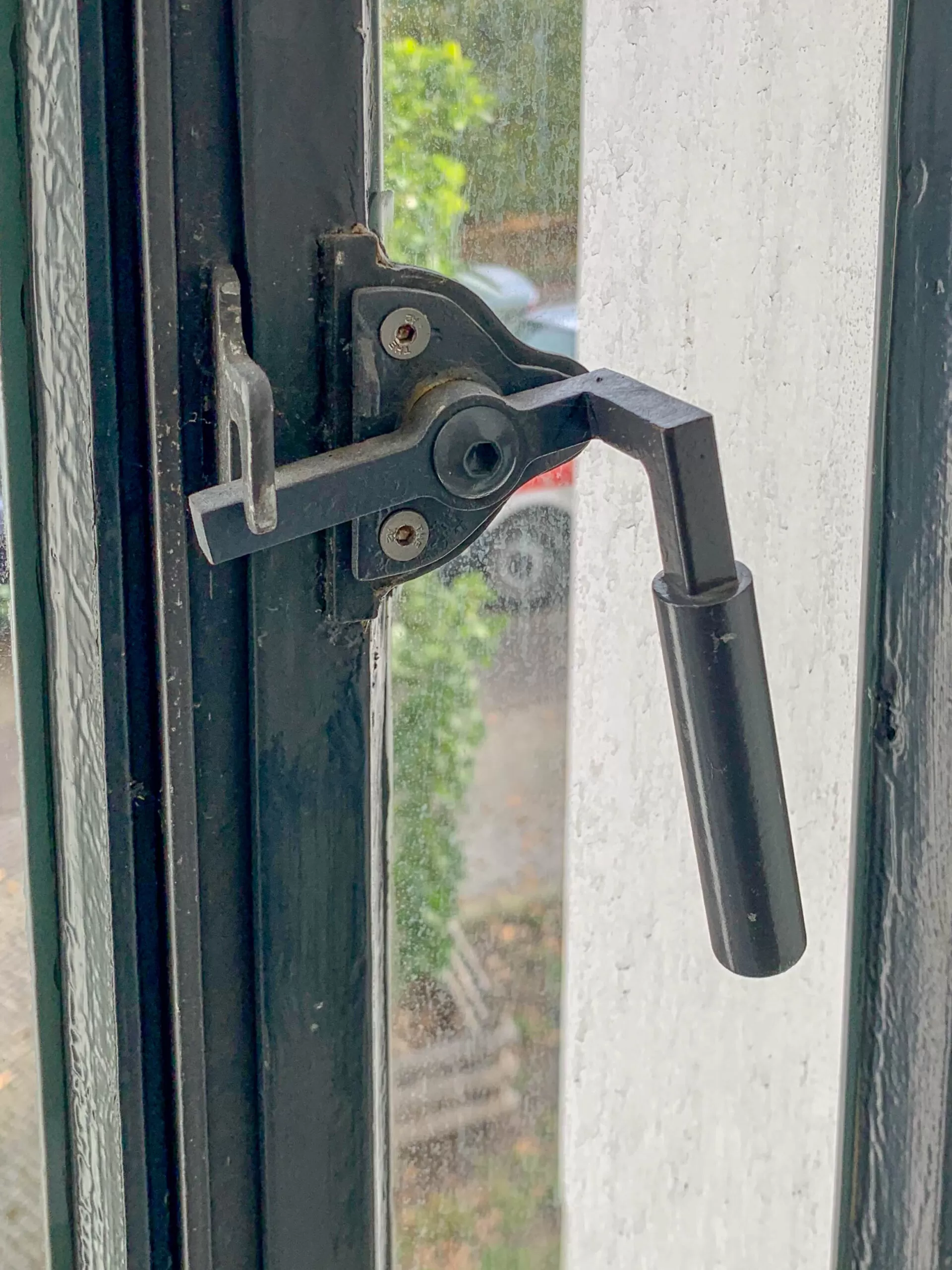1929 – 1931
Architect: Walter Gropius
Goebelstraße 120-122, Jungfernheideweg 21-45, Berlin, Germany
Siemensstadt
The listed Großsiedlung Siemensstadt, also called Ringsiedlung in Berlin, established a new type of housing estate consisting only of multi-storey apartment buildings (in contrast to the large Berlin housing estates Britz and Zehlendorf).
For the design of the housing estate, Martin Wagner, the city’s building councillor, appointed the members of the progressive architects’ association Der Ring as well as the architects Fred Forbát and Paul Rudolf Henning.
The total of 1.370 apartments and 17 stores, built in three construction phases, were primarily intended to provide new living space for the employees of the Siemens company and to ensure daily local supply.
An average apartment size was 54 square meters.
Development
The development plan by Hans Scharoun points the way to the international modern urban design of the loosened up, structured and greened city, whose core is a generous green area designed by the garden architect Leberecht Migge.
Most of the rows of the large housing estate are arranged in a north-south direction to ensure optimal lighting of the apartments.
The architects typified windows, doors and floor plans of the apartments, most of which have two to two-and-a-half-room units, in the individual rows.
District Heating Plant
The Siemensstadt housing estate was one of the first in Berlin to be equipped with its own district heating system.
Originally planned at a different location by Fred Forbat, the building was then placed in the middle of the housing estate equidistant from the eastern and western rows for technical reasons, in order to keep the supply routes for heating and hot water to a minimum.
With the central heating system installed, a better use of the living space was also to be achieved, as up to 5 square meters of living space could be gained in each of the small apartments by eliminating the tiled stoves that had been common until then.
Although all the houses in Siemensstadt had been equipped with their own laundry and drying rooms, the heating plant designed by Otto Bartning in conjunction with engineer Max Mengeringhausen contained a central settlement laundry.
After the settlement was connected to the Berlin district heating network, the district’s own heating plant was shut down and the distinctive chimney was demolished.
Apartment Building Walter Gropius
The elongated four-story row with stores and the adjoining arcade apartment building designed by Walter Gropius was erected in the first construction phase of the estate and impresses with its clear, distinct design.
Window openings – visually combined by dark purple clinker bricks – structure the street facade into horizontal bands.
On the set-back top floor are sun terraces closed off from the facade by grids.
The four-story row building opposite at Jungfernheideweg 18-30 was also designed by Walter Gropius.
World Heritage
During the Second World War, the corner store was destroyed and initially rebuilt in a simplified form.
In 1990 this area was redesigned and supplemented by the Munich architects Hilmer and Sattler.
2008, the Siemensstadt housing estate was included in the UNESCO World Heritage List as one of a total of six modernist housing estates in Berlin.

